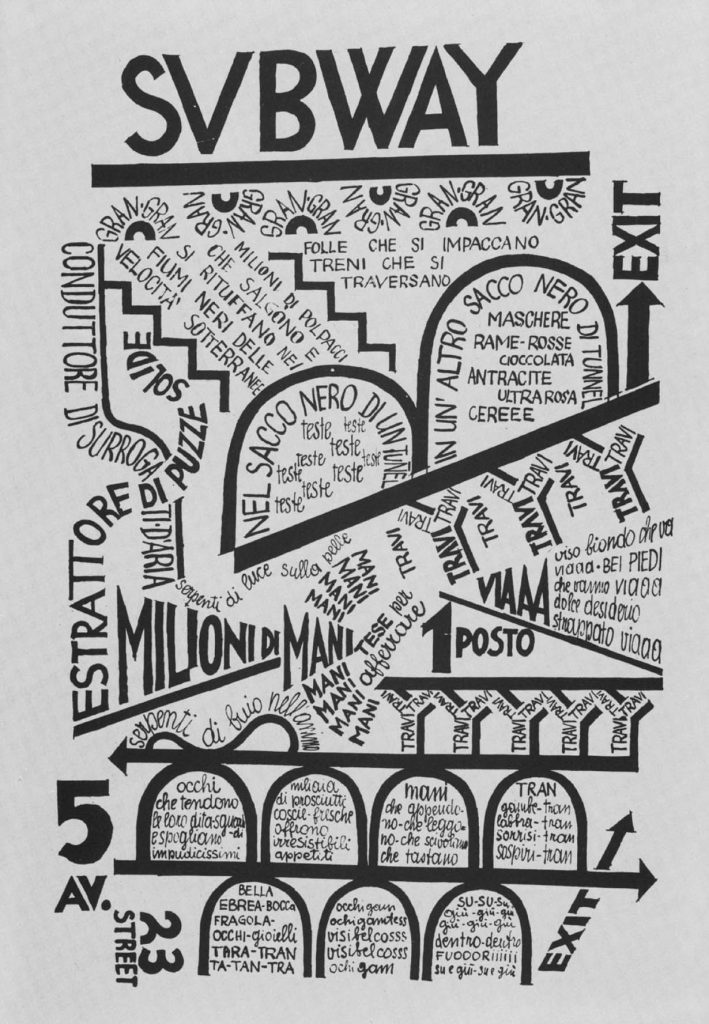The term futurism has come to represent optimistic insight on what’s to come for humanity, technology, and the world. It seeks to create certainty where there is none, separate science fiction from science fact, an offer an opportunity to assess and debate what it will mean to be human in the years to come.
But it wasn’t always like this.
In 1909, Italian author Filippo Tommaso Marinetti penned the Futurist Manifesto, and had it published on the front page of France’s most prestigious newspaper, Le Figaro. Marinetti believed his country was hopelessly obsessed with the past, both culturally and artistically, and that this needed to change. He championed a celebration of modernity, and a future aesthetic which he referred to as “the beauty of speed”:
“We affirm that the world’s magnificence has been enriched by a new beauty: the beauty of speed. A racing car whose hood is adorned with great pipes, like serpents of explosive breath—a roaring car that seems to ride on grapeshot is more beautiful than the Victory of Samothrace (a Grecian sculpture from the 2nd Century BC).”
For all the discussion of beauty, Marinetti’s strategy to influence this departure from cultural tradition was not driven by assessment and debate as it is today, but rather by violence.
He believed the creation of art to be an act of violence, and so he called on his fellow artists to burn the libraries, lay waste to museums, and bring an end to the idolatry of the past. Many listened, and though they may not have taken to the streets, Marinetti’s influence began to show in their work.
Over the next few years, Marinetti would incite not just random acts of violence, but all out war.
“We will sing of great crowds excited by work, by pleasure, and by riot; we will sing of the multicoloured, polyphonic tides of revolution in the modern capitals; we will sing of the vibrant nightly fervour of arsenals and shipyards blazing with violent electric moons; greedy railway stations that devour smoke-plumed serpents; factories hung on clouds by the crooked lines of their smoke; bridges that stride the rivers like giant gymnasts, flashing in the sun with a glitter of knives; adventurous steamers that sniff the horizon; deep-chested locomotives whose wheels paw the tracks like the hooves of enormous steel horses bridled by tubing; and the sleek flight of planes whose propellers chatter in the wind like banners and seem to cheer like an enthusiastic crowd.”
The futurist movement united with Benito Mussolini and the National Fascist Party and, in 1914, agitated for Italian involvement in World War I, hoping it would bring about the revolution he was hoping for not just in his home nation, but across Europe. In sticking with his futurist roots, Marinetti volunteered for the cycling corps, and was later positioned with an artillery unit, whilst simultaneously promoting the war effort through speeches, theatrical performances, and the art of his peers.
It was in thus art that the clearest links between past and present futurism are forged. One of Marinetti’s plays, Electric Dolls, features the first known use of the word ‘robot’. His peer, the famed sculptor Umberto Boccinoni, created pieces capturing the beauty of speed in a way that would resonate through the following century. In 2008, for instance, BMW revealed their GINA Light Visionary Concept Car, a vehicle influenced strongly by Boccinoni’s style of capturing the fourth dimension, “that of the wind” as BMW chief designer Chris Bangle put it.
https://www.youtube.com/watch?v=kTYiEkQYhWY
Futurism also had a profound effect on the advertising industry. In particular, the work of Fortunato Depero redefined graphic design by playing with form and typeface in a captivating way that he hoped would “delete” traditional perspective.
In his later life, Marinetti became less and less radical. He even became an academic, serving in the same kind of institute he had opposed decades earlier. By 1944, the year of Marinetti’s death, the artistic influence of futurism held strong, though the social influence did not. In its place, especially in the West, sprang an optimistic ideology that the ‘Age of the Machine’ would bring about peace and equality.
Of course, that was not to be. At least, not yet. With such a sense of aggression fuelling this future vision, is it any surprise that the modern day best represents the dystopic future envisioned by the likes of Lang, Orwell, and Asimov, rather than the utopia Marinetti and his contemporaries thought they were shaping? Can destruction and revolution bring about harmony? Only the future knows for sure.

